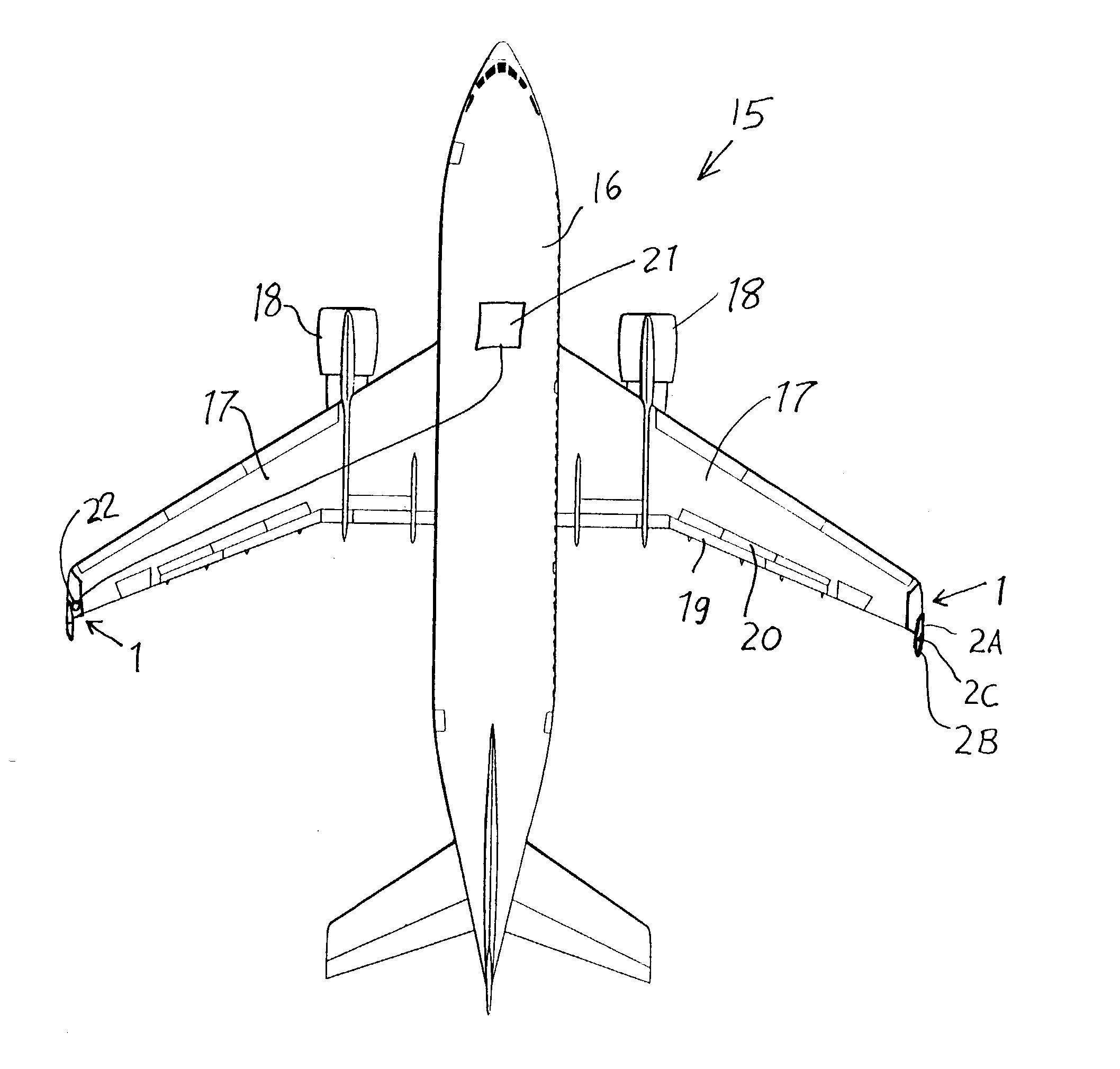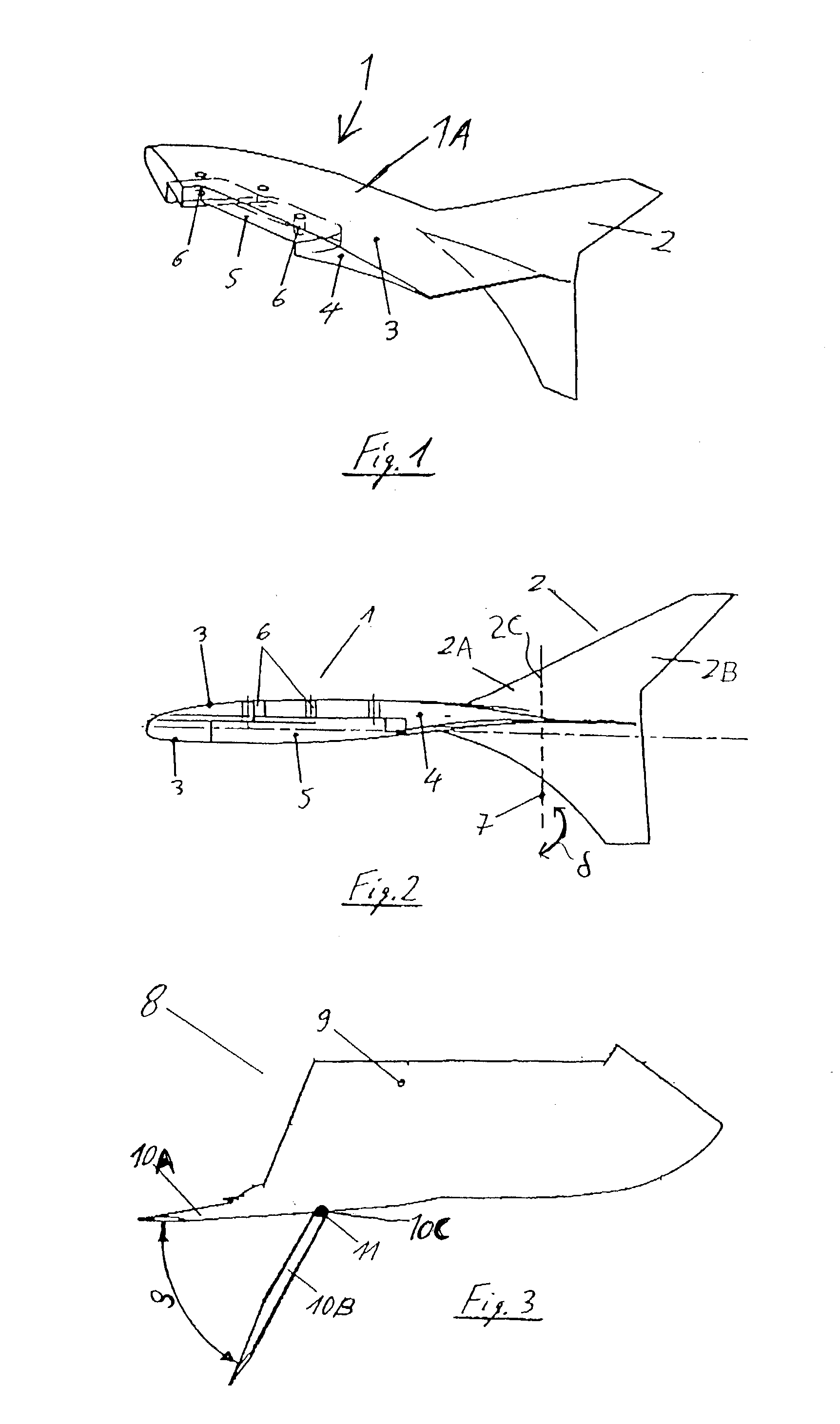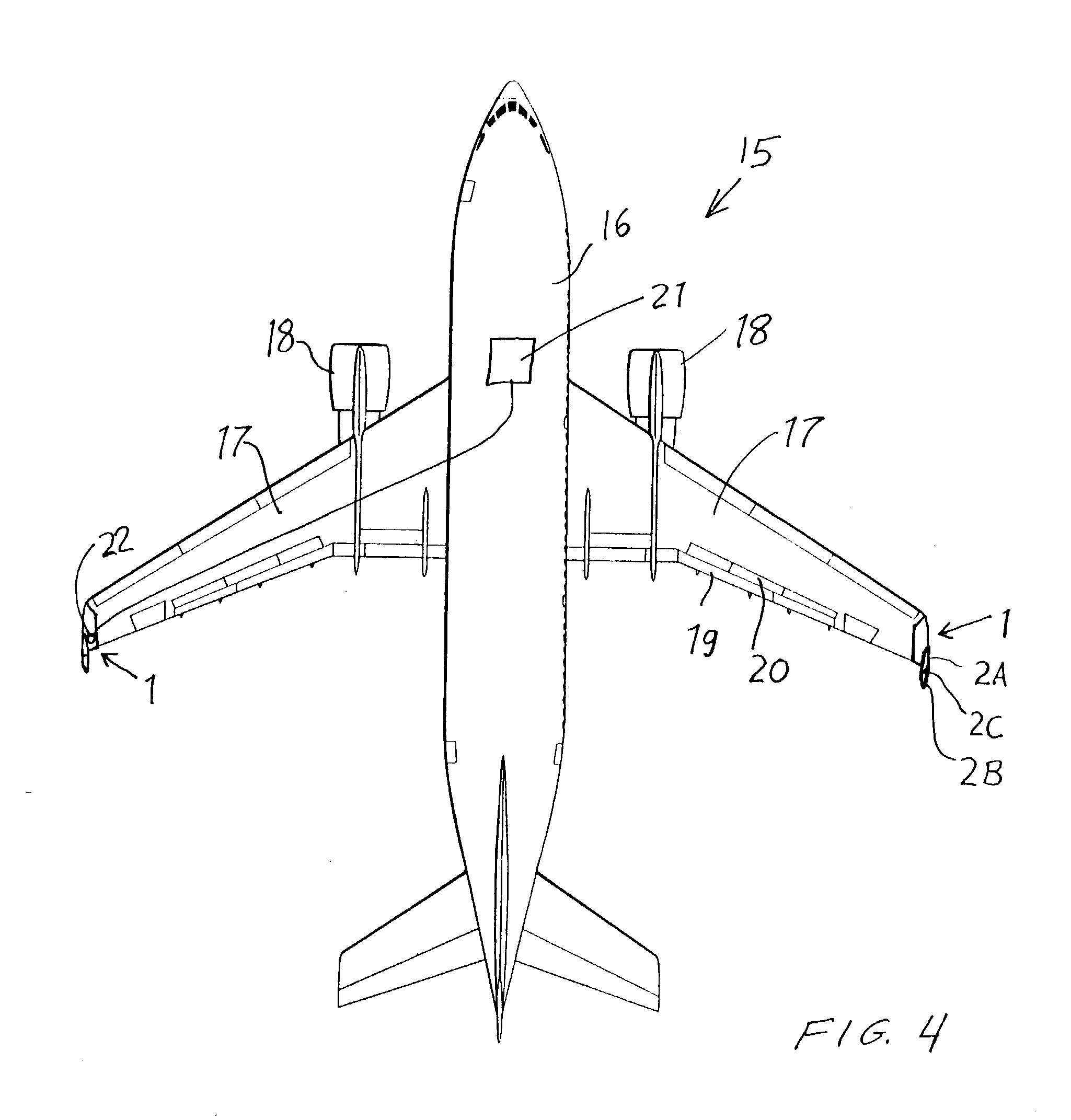Method and device for steepening a landing approach of an aircraft
a landing approach and aircraft technology, applied in emergency apparatus, transportation and packaging, air-flow influencers, etc., can solve the problems of increasing the power of the aircraft, reducing the capacity of the aircraft, and affecting the capacity of the air traffic of many airports
- Summary
- Abstract
- Description
- Claims
- Application Information
AI Technical Summary
Benefits of technology
Problems solved by technology
Method used
Image
Examples
Embodiment Construction
[0017] As shown in FIG. 1, an aerodynamic component 1 according to the invention is generally surfacially extending and aerodynamically contoured and is adapted to be connected to each respective outboard wingtip of a wing 17 of an aircraft 15, as generally shown in FIG. 4. The aerodynamic component 1 includes a main plane body 1A that is rigid and adapted to be fixed to the wingtip of the aircraft wing 17 with the main plane body 1A extending aerodynamically smoothly and continuously from the wingtip of the aircraft wing 17 and along the major plane of the wing 17 (e.g. the plane extending along both the leading edge and the trailing edge of the wing 17).
[0018] The aerodynamic component 1 further comprises a control surface member 2 that also has a generally surfacially extending or planar and aerodynamically contoured configuration. The control surface member 2 is connected and smoothly transitions to the main plane body 1A. Preferably, the plane of the control surface member 2 st...
PUM
 Login to View More
Login to View More Abstract
Description
Claims
Application Information
 Login to View More
Login to View More - R&D
- Intellectual Property
- Life Sciences
- Materials
- Tech Scout
- Unparalleled Data Quality
- Higher Quality Content
- 60% Fewer Hallucinations
Browse by: Latest US Patents, China's latest patents, Technical Efficacy Thesaurus, Application Domain, Technology Topic, Popular Technical Reports.
© 2025 PatSnap. All rights reserved.Legal|Privacy policy|Modern Slavery Act Transparency Statement|Sitemap|About US| Contact US: help@patsnap.com



